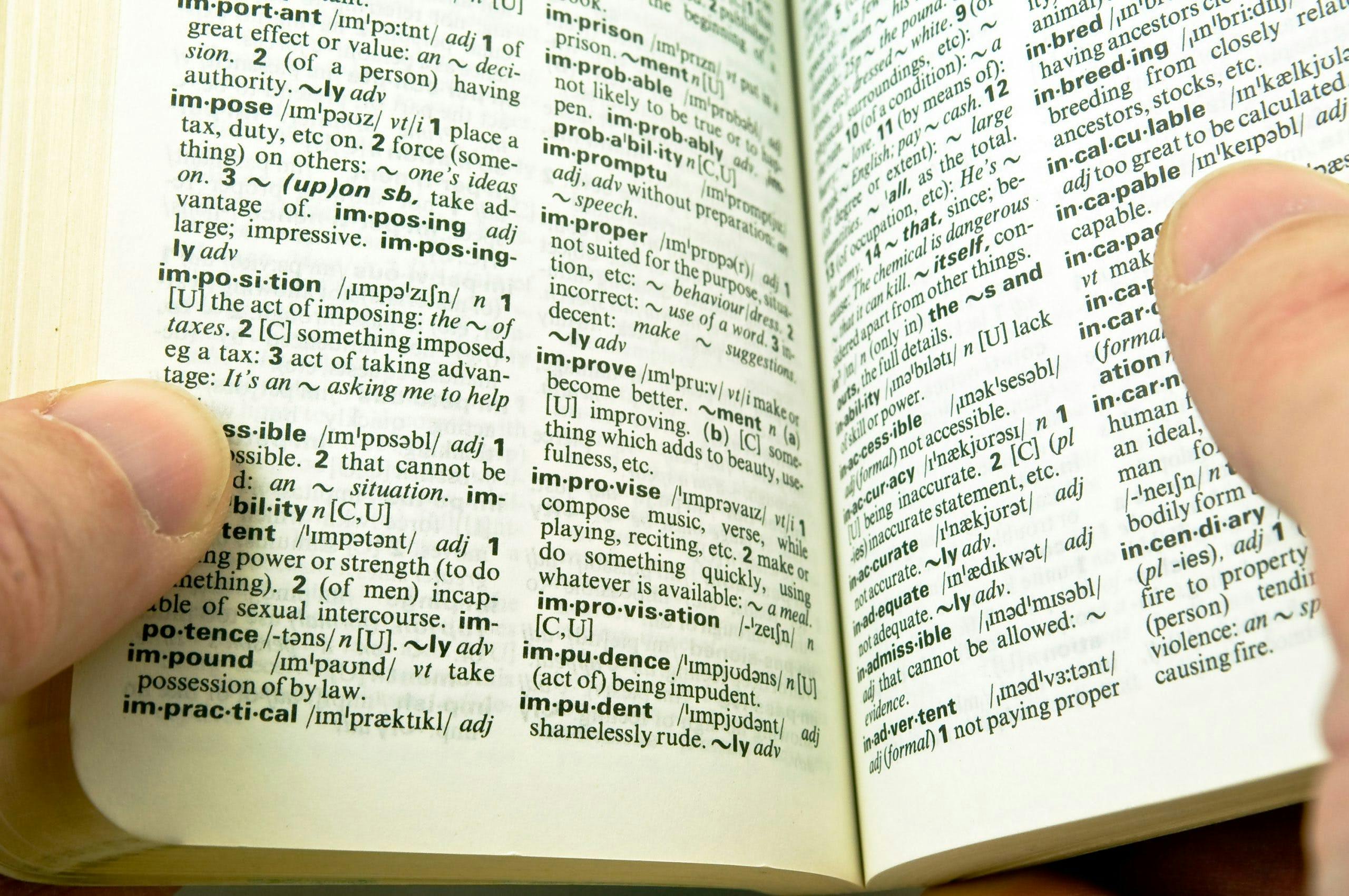Resolution 2020: To proactively streamline utilization of erudite vocabulary
It’s the beginning of a new year and I have resolved to take things into my hands.
This year, I will seamlessly integrate goal-oriented physical exertion into my calendar, to synergistically build it up as a core competency.
That’s not all.
I have also decided to proactively cultivate my bibliophilic propensities by incorporating stretch reading goals.
In my excitement, I also mentioned to my partner that we could collaboratively re-conceptualize our domestic chore allocation and substantially increase our efficiency by leveraging on our mutual vision of an egalitarian household. Would you believe it, he brushed me off! To that, I say, he is not being customer-centric!
Why am I talking like that, you ask? That’s a resolution as well. To speak the way corporations and brands talk: in jargon.
Behavioral Science, Democratized
We make 35,000 decisions each day, often in environments that aren’t conducive to making sound choices.
At TDL, we work with organizations in the public and private sectors—from new startups, to governments, to established players like the Gates Foundation—to debias decision-making and create better outcomes for everyone.
Jargon, jargon, everywhere
Art by versusthemachines
Many years back, on the popular TV show F.R.I.E.N.D.S, Joey Tribbiani was given the important responsibility of writing a recommendation letter for his dear friends, Monica and Chandler. Trying to be articulate, he describes them as “humid, prepossessing Homo sapiens with full-sized aortic pumps” or in other words, “warm, nice people with big hearts” — thanks to the beauty of the right-click synonym feature in Microsoft Word [1].
I might have laughed a riot back then, but now I shed tears when I see jargon. And jargon is everywhere!
There somehow seems to be a misconception that longer or less common words make the speaker more intelligent. It’s no surprise, then, that jargon has infiltrated corporate vocabulary so deeply. From creating paradigm shifts to building digital switchboards, we have likely all sat in meetings, not entirely sure what some such phrase was meaning to say. What’s worse, though, is how jargon has entered the world of consumer advertising. The purpose of advertising is to simplify a product and explain its unique selling proposition to the customers as succinctly as possible. And yet, we see advertisements with abstract taglines all around us.
Why do we have this obsession with large words?
Duly or not, people see a positive correlation between vocabulary and intelligence. The more complex words and sentence constructions used, the more intelligent a person is perceived to be (Pennebaker, 2014). In an interesting analysis of 50,000 college admission essays, Pennebaker and coauthors found that higher grades were associated with complexly organized objects and concepts, while lower grades were associated with more personalized writing styles [2].
Grice’s Maxim of Manner, a touchstone for many writers, is quite clear: it recommends “to be as clear, as brief, and as orderly as one can in what one says” [3]. However, the complexity emerges on the reader’s side. Simple text comes with the baggage of the assumption that the author did not put too much thought into writing this. A simple language representative of a simple idea requires less effort. But a complex language, requiring more effort, seems worth the process.
Complex does not mean good
Thankfully, behavioral science research has an antidote. In a paper titled ‘Consequences of erudite vernacular utilized irrespective of necessity: Problems with using long words needlessly’, Oppenheimer explores the link between fluency and complex words through a series of interesting experiments [4].
In the first experiment, 6 personal statements for admission to an English literature course at Stanford were created, each with a different level of complexity. The most complex version was (probably) eerily similar to what Joey Tribbiani wrote, given it was a direct result of replacing words with their longest synonyms from Microsoft Word. Participants were shown one of these statements at random and were asked to accept or reject this candidate for admission to the course. The results showed that the most complex statements had the lowest ratings and the most adverse decisions. On the other hand, the simplest statements had the highest acceptance rate. The authors conclude that fluency of reading causes this effect. Complex sentences are hard to read and hence, hard to judge.
In follow up experiments, to remove the biases associated with the admissions process, the author shows simple and complex translations Rene Descartes Meditation IV to participants and ask them to judge the intelligence of the author on a 7 point scale. In line with the previous results, complexity once again negatively impacts the participant’s assessment of the author’s intelligence.
The AI Governance Challenge
Less is More
Despite the limitations of the experiments, a key takeaway from this paper is the important link between fluency and understanding. To put it simply, simplicity is the best bet.
If there is anything that we have learnt from behavioral science, it is that human beings are not perfectly rational, do not have unlimited attention, and are prone to (quite literally) judging a book by its cover. Knowing this, it is the imperative of writers, brand marketers, and all communication professionals to simplify. Less is more.
Here’s what communicators can do:
- Communicate with the non-average audience. We always think about the average audience and plan products and communications according to their expected intelligence level. But, as Rory Sutherland suggests, it is the extreme audience that we need to think about [6]. So, when planning for communication, to put it colloquially, think about how you would explain it to your grandmother. If it is simple enough for her, it is simple enough for everyone and you have hit the nail on the head.
- Avoid acronyms and big words. I stay in Singapore, a city that has a particularly high penchant for acronyms. IKR, I am SMH RN. (For newbies, I just said, “I know, right, I am shaking my head right now.” Keep up!) If we ever did a quick back of the envelope calculation on time saved by using an acronym and man-hours spent on explaining acronyms, my hypothesis is, the latter would outweigh the former. So, next time, audit your communication to ensure there are no unnecessary acronyms. In the same breathe, may I also suggest editing out big words?
- Draw instead of write. There is considerable evidence suggesting illustrations and visuals are far more effective than text in the learning paradigm [7,8] — and if it works in learning, it works in communication. If you can replace text with visuals, you are bound to improve the fluency of the communication.
As Mark Twain once famously quipped, “I apologize for such a long letter – I didn’t have time to write a short one.” Like most of Twain’s jokes, it reflects a relatable truth: it is definitely not easy to write simple, short, and effective communication — but we owe it to our readers to at least try.
So, this year, pledge to objectively streamline erudite communications to focused, directed vocabulary or in other words, Keep It Simple, Stupid.
References
- https://www.quotes.net/show-quote/32456
- Pennebaker, J. W., Chung, C. K., Frazee, J., Lavergne, G. M., & Beaver, D. I. (2014). When small words foretell academic success: The case of college admissions essays. PloS one, 9(12), e115844
- https://en.wikipedia.org/wiki/Cooperative_principle#Grice’s_maxims
- Oppenheimer, D. M. (2006). Consequences of erudite vernacular utilized irrespective of necessity: Problems with using long words needlessly. Applied Cognitive Psychology: The Official Journal of the Society for Applied Research in Memory and Cognition, 20(2), 139-156.
- https://www.goodreads.com/quotes/7144975-i-apologize-for-such-a-long-letter—i-didn-t
- Sutherland, R (2019). Alchemy: The Surprising Power of Ideas That Don’t Make Sense
- Mayer, R. E. (1989). Systematic thinking fostered by illustrations in scientific text. Journal of educational psychology, 81(2), 240.
- Levie, W. Howard, and Richard Lentz. “Effects of text illustrations: A review of research.” Ectj 30, no. 4 (1982): 195-232.
About the Author
Preeti Kotamarthi
Preeti Kotamarthi is the Behavioral Science Lead at Grab, the leading ride-hailing and mobile payments app in South East Asia. She has set up the behavioral practice at the company, helping product and design teams understand customer behavior and build better products. She completed her Masters in Behavioral Science from the London School of Economics and her MBA in Marketing from FMS Delhi. With more than 6 years of experience in the consumer products space, she has worked in a range of functions, from strategy and marketing to consulting for startups, including co-founding a startup in the rural space in India. Her main interest lies in popularizing behavioral design and making it a part of the product conceptualization process.




